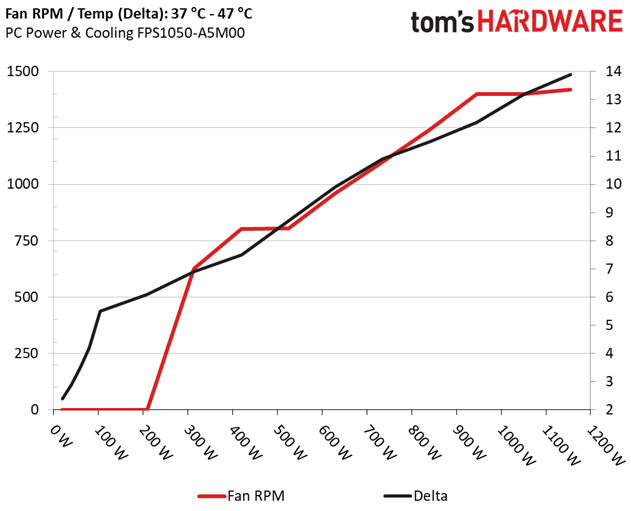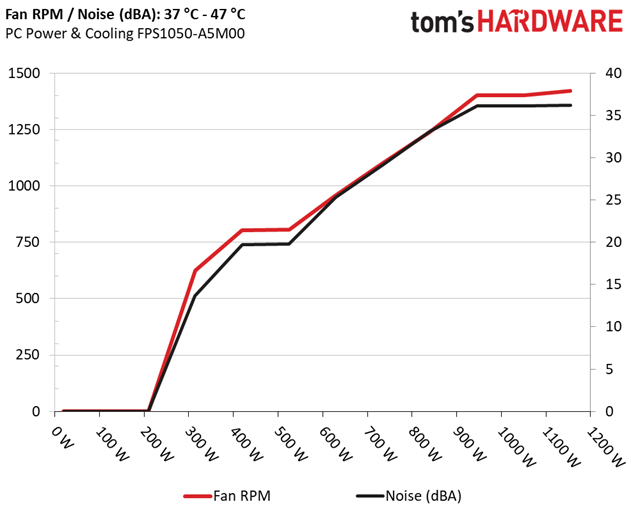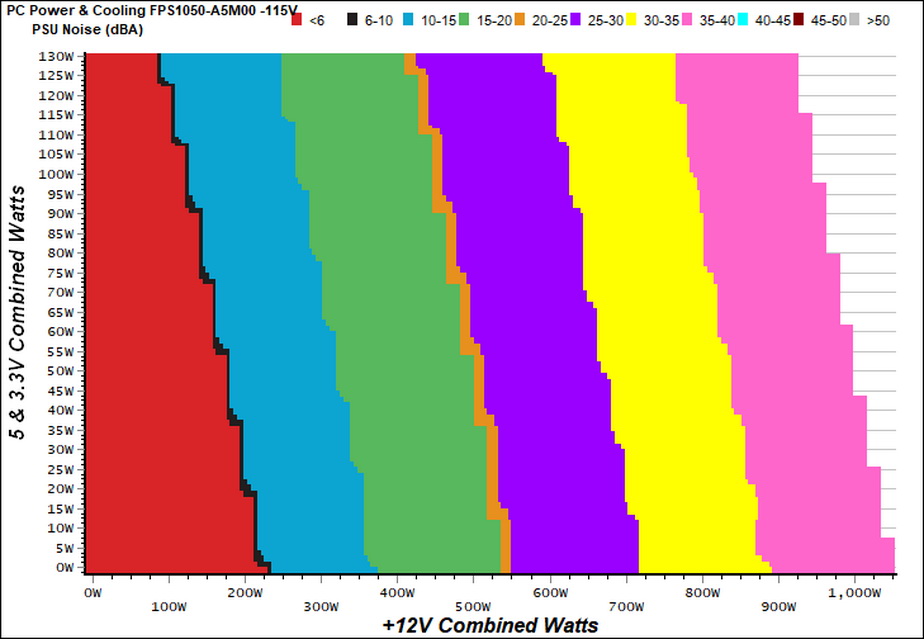PC Power & Cooling Silencer 1050W PSU Review: Affordable Yet Powerful
Why you can trust Tom's Hardware
Efficiency, Temperature & Noise
Efficiency
Our efficiency testing procedure is detailed here.
Using results from the previous page, we plotted a chart showing the Silencer’s efficiency at low loads, and loads from 10 to 110 percent of its maximum-rated capacity.
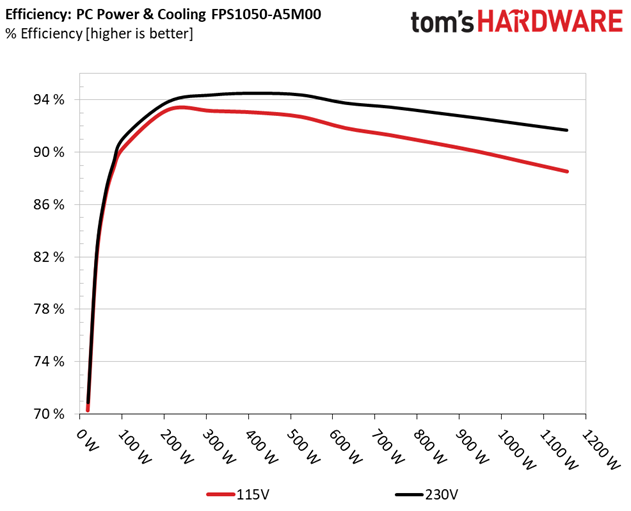
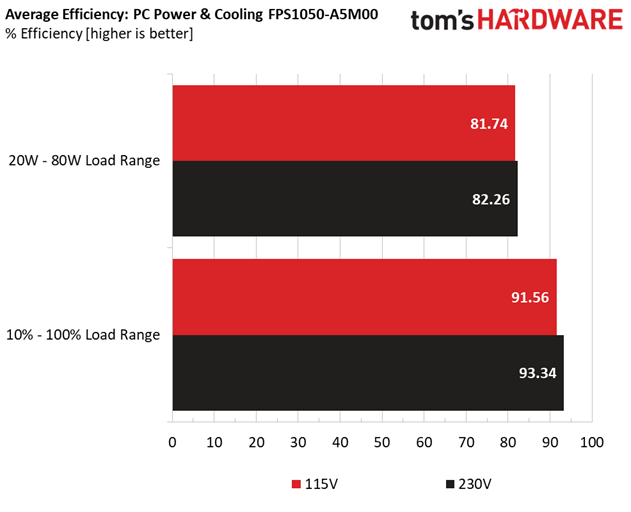
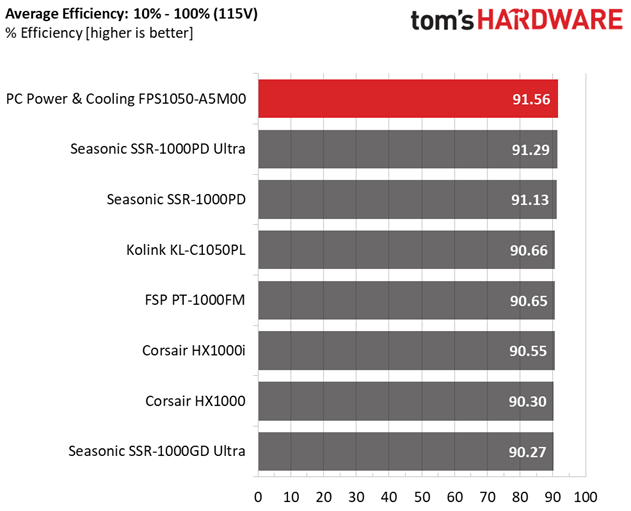
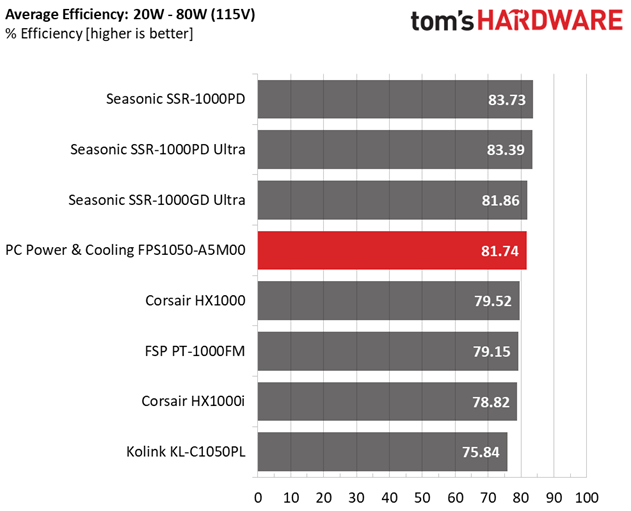
This new platform is highly efficient under normal and light loads.
Efficiency At Low Loads
In the following tests, we measure the Silencer's efficiency at loads significantly lower than 10 percent of its maximum capacity (the lowest load the 80 PLUS standard measures). The loads we dial are 20, 40, 60, and 80W. This is important for representing when a PC is idle, with power-saving features turned on.
| Test # | 12V | 5V | 3.3V | 5VSB | DC/AC (Watts) | Efficiency | Fan Speed | PSU Noise | PF/AC Volts |
|---|---|---|---|---|---|---|---|---|---|
| 1 | 1.203A | 0.496A | 0.485A | 0.199A | 19.561 | 70.267% | 0 RPM | <6.0 dB(A) | 0.830 |
| 12.028V | 5.026V | 3.299V | 5.018V | 27.838 | 115.04V | ||||
| 2 | 2.465A | 0.994A | 0.999A | 0.399A | 39.974 | 81.738% | 0 RPM | <6.0 dB(A) | 0.915 |
| 12.038V | 5.032V | 3.300V | 5.017V | 48.905 | 115.05V | ||||
| 3 | 3.658A | 1.491A | 1.484A | 5.007A | 59.417 | 86.244% | 0 RPM | <6.0 dB(A) | 0.947 |
| 12.035V | 5.029V | 3.299V | 5.007V | 68.894 | 115.04V | ||||
| 4 | 4.925A | 1.990A | 2.000A | 0.801A | 79.857 | 88.690% | 0 RPM | <6.0 dB(A) | 0.967 |
| 12.032V | 5.027V | 3.297V | 4.997V | 90.041 | 115.04V |
Under light loads, even in a warm ambient environment, the PSU operates passively, achieving high efficiency levels. It is great to see >70% efficiency with 20W load. The 80% mark is easily passed in the other three tests.
5VSB Efficiency
The ATX specification (revision 1.4), along with CEC, ErP Lot 3 2014 and ErP Lot 6 2010/2013, states that 5VSB standby supply efficiency should be as high as possible, recommending 75 percent or higher with 550mA, 1A, and 1.5A of load. The PSU should also achieve higher than 75% efficiency at 5VSB under full load, or with 3A if its max current output on this rail is higher than 3A.
We take six measurements: one each at 100, 250, 550, 1000, and 1500mA, and one with the full load the 5VSB rail can handle.
Get Tom's Hardware's best news and in-depth reviews, straight to your inbox.
| Test # | 5VSB | DC/AC (Watts) | Efficiency | PF/AC Volts |
|---|---|---|---|---|
| 1 | 0.100A | 0.511 | 70.000% | 0.084 |
| 5.111V | 0.730 | 115.10V | ||
| 2 | 0.250A | 1.276 | 75.059% | 0.178 |
| 5.106V | 1.700 | 115.10V | ||
| 3 | 0.550A | 2.803 | 79.136% | 0.292 |
| 5.097V | 3.542 | 115.10V | ||
| 4 | 1.000A | 5.083 | 79.496% | 0.378 |
| 5.083V | 6.394 | 115.10V | ||
| 5 | 1.500A | 7.601 | 79.717% | 0.425 |
| 5.067V | 9.535 | 115.10V | ||
| 6 | 3.000A | 15.042 | 77.865% | 0.484 |
| 5.014V | 19.318 | 115.09V |
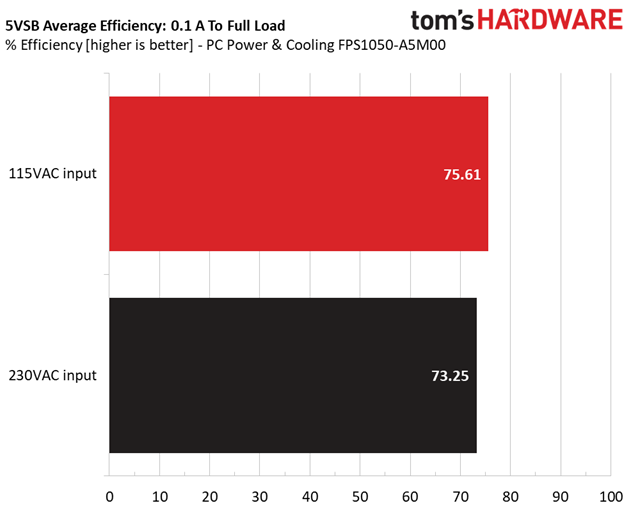
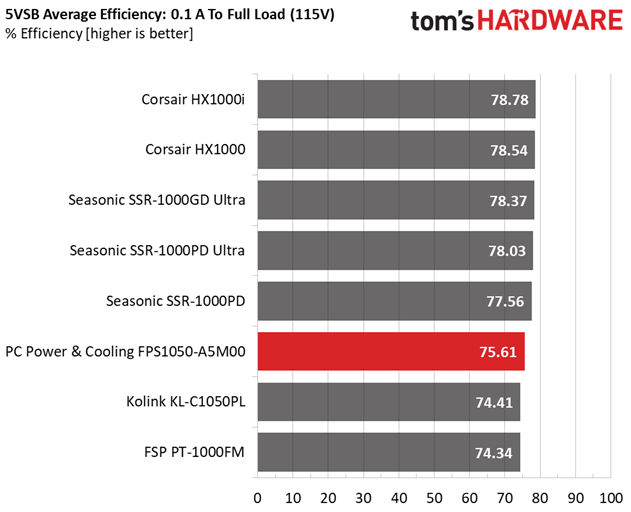
The 5VSB rail's efficiency could be higher, especially with 230V input. Given this platform's exceptional efficiency, we were expecting the 5VSB circuit to match.
Power Consumption In Idle And Standby
In the table below, you'll find the power consumption and voltage values of all rails (except -12V) when the PSU is idle (powered on, but without any load on its rails), and the power consumption when the PSU is in standby mode (without any load, at 5VSB).
| Mode | 12V | 5V | 3.3V | 5VSB | Watts | PF/AC Volts |
|---|---|---|---|---|---|---|
| Idle | 12.034V | 5.026V | 3.298V | 5.025V | 8.511 | 0.484 |
| 115.0V | ||||||
| Standby | 0.081 | 0.010 | ||||
| 115.0V |
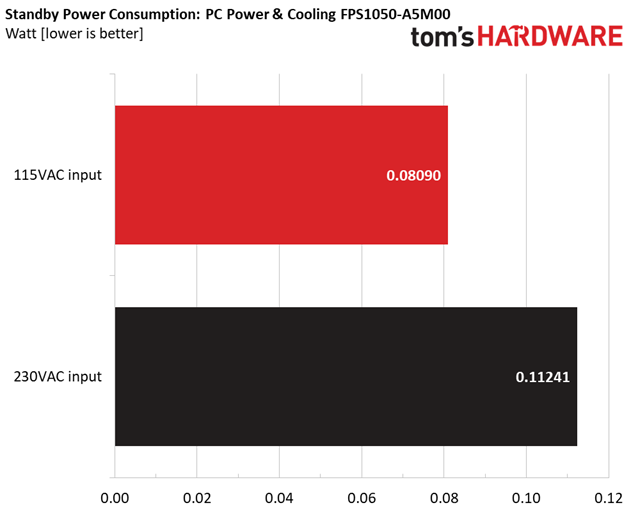
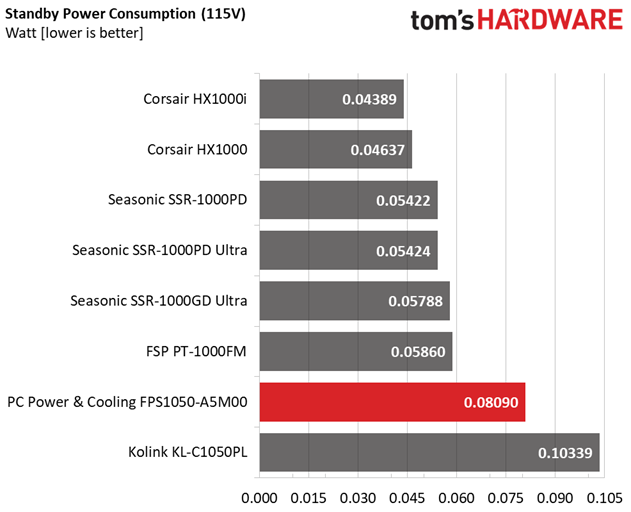
PC Power & Cooling's vampire power is a little higher than the competition. It should be lower than 0.1W with 230V input.
Fan RPM, Delta Temperature, And Output Noise
Our mixed noise testing is described in detail here.
The first chart below illustrates the cooling fan's speed (in RPM), and the delta between input and output temperature. The results were obtained at 37°C (98.6°F) to 47°C (116.6°F) ambient temperature.
The next chart shows the cooling fan's speed (again, in RPM) and output noise. We measure acoustics from one meter away, inside a hemi-anechoic chamber. Background noise inside the chamber is below 6 dB(A) during testing (it's actually much lower, but our sound meter’s microphone hits its floor), and the results are obtained with the PSU operating at 37°C (98.6°F) to 47°C (116.6°F) ambient temperature.
The following graph illustrates the fan's output noise over the PSU's operating range. The same conditions of the above graph apply to our measurements, though the ambient temperature was between 30°C (86°F) to 32°C (89.6°F).
This is probably the most uniform noise chart that we have ever generated. The passive mode doesn't last long; it ends around 220W load on the +12V rail. With up to 720W, noise output remains low. It takes more than 900W for the PSU to enter the 35-40 dB(A) region.
MORE: Best Power Supplies
MORE: How We Test Power Supplies
MORE: All Power Supply Content
Current page: Efficiency, Temperature & Noise
Prev Page Load Regulation, Hold-Up Time & Inrush Current Next Page Protection Features & DC Power Sequencing
Aris Mpitziopoulos is a contributing editor at Tom's Hardware, covering PSUs.
